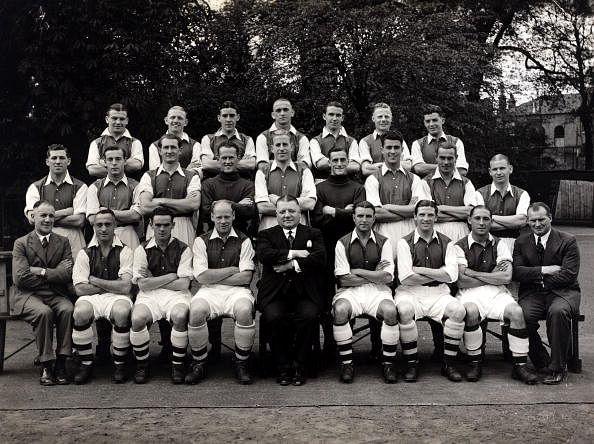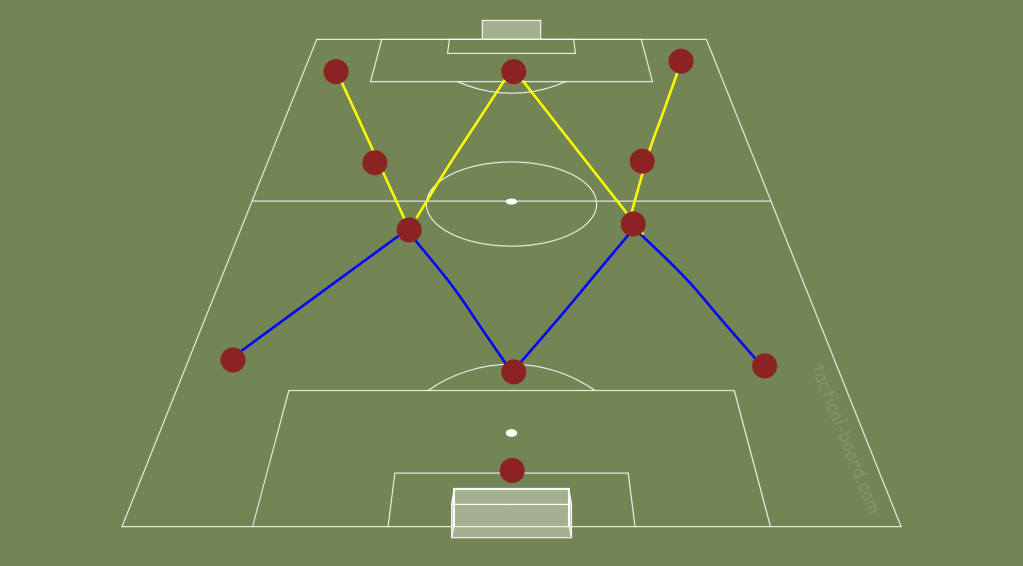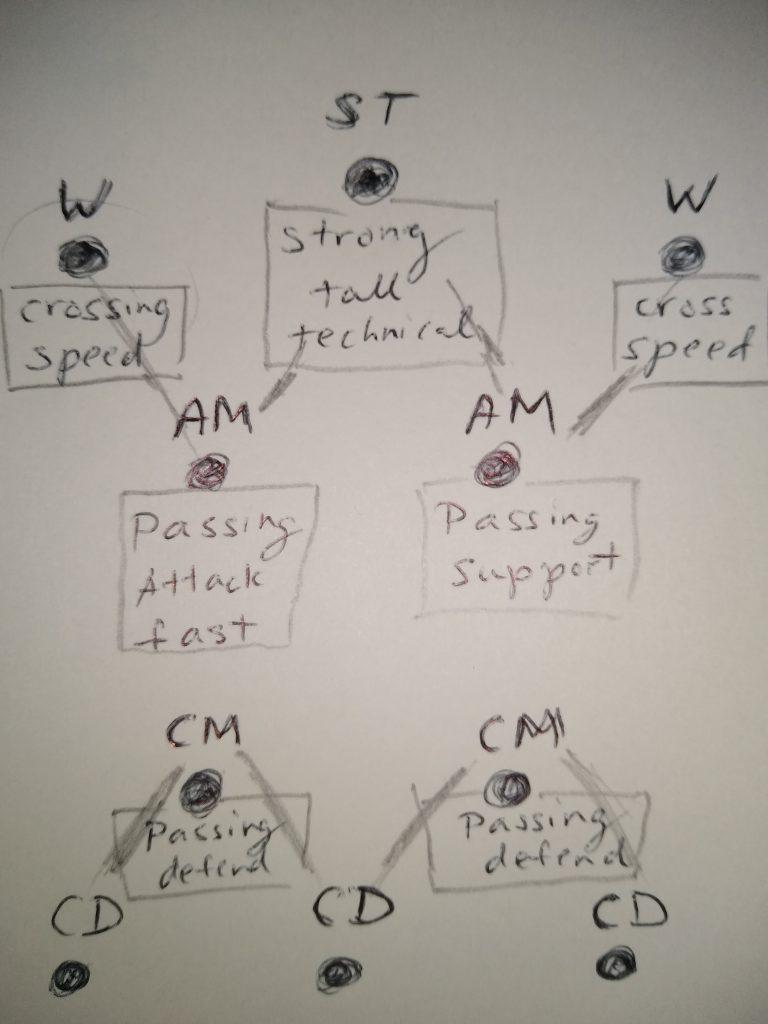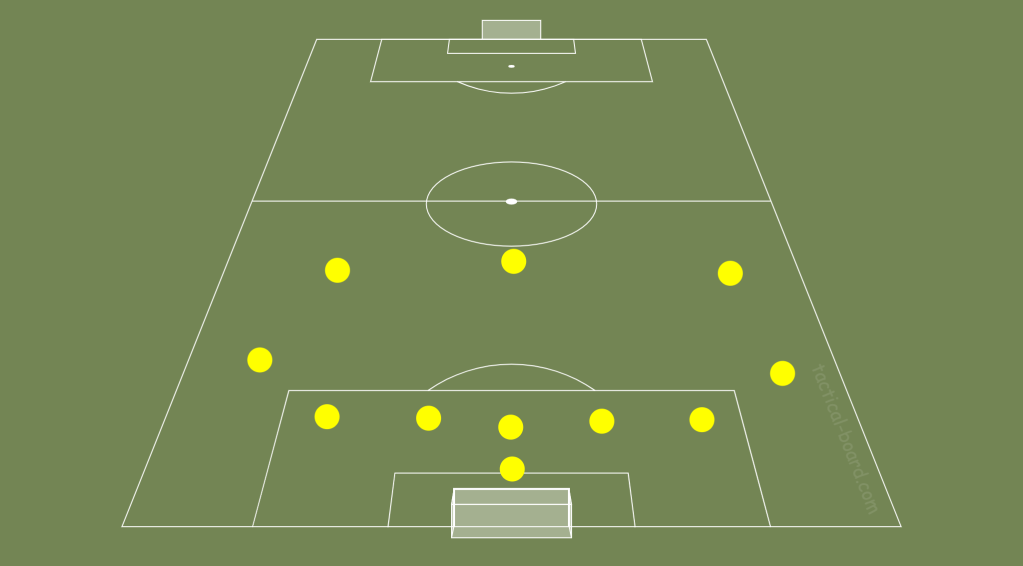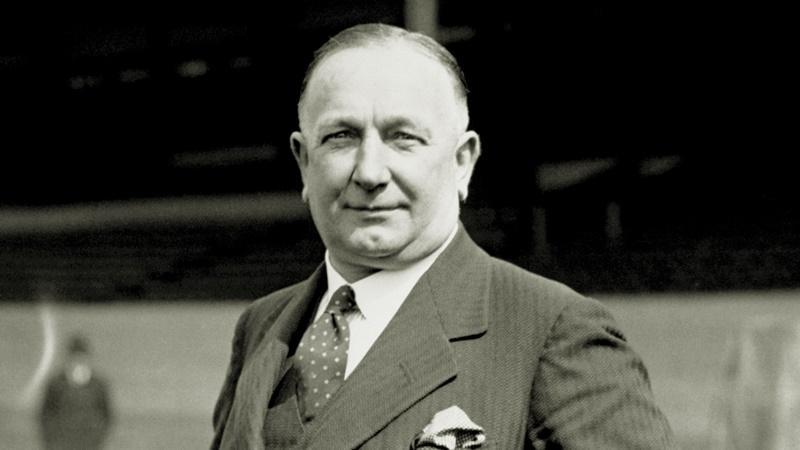
Football Manager Primer – Part 1, Simple Football
Guide to Playing Football Manager the Simple Way, from FM2014 to FM20??
There exist many different ways to play the beautiful game of football. As many as clubs and managers, past and present, that ever existed. And throughout the sport’s long history, there were thousands of amateur and professional managers. Each with their own unique vision of organizing players on the pitch. But there are some things that don’t change. This brings me to the reason for this guide. It’s been my long-time intention to write THE ultimate guide, transferable from one version of Football Manager to another. The idea was born during FM19 days when I first started writing for Dictatethegame. But it was not until this year that I felt comfortable enough in my writing skill and in-game tactical knowledge to attempt such a project. So here hoping that this multi-part guide can live up to its ambitious scope and help new and returning FM players.
While footballers come and go (and stars rise and fade), some things don’t change in football. This is also true in the virtual world of Football Manager, a seminal sports management series that is now going strong into its 4th decade (if you count its humble Champ Manager origins).
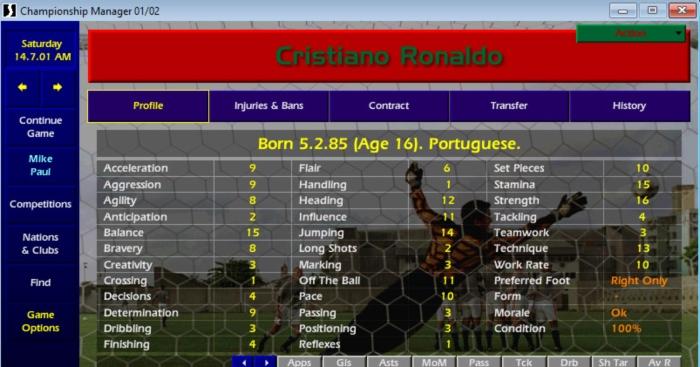
There are some tactical absolutes in this long-running franchise. They can be applicable whether you pick up its newest version, or you are still plugging away at FM14. FM14 specifically was a truly revolutionary Football Manager entry (from 2013). It first introduced player roles and abandoned sliders all together. Since 2013, there has been a steady flow of yearly updates. Yet there always existed few core concepts, irrespective of the ever-evolving match engine and it’s constant drive towards greater realism, that didn’t change. These concepts defined the series. By adhering to these simple ideas, one can play Football Manager in the more simple way. And more importantly transfer their in-game success from one version to the next.
This is the guide to doing exactly that. Finding success by adhering to simple way of playing the game. It should be applicable to all recent Football Manager games, from FM14 to FM22 (and beyond) by mastering the basics, unchanged from year to year.
The Common Elements in Post-2013 FMs
- Tactical Planning
- Attributes
- Player Roles
In the immortal words of William Shakespeare, the world is the biggest stage and we are all merely players in it.
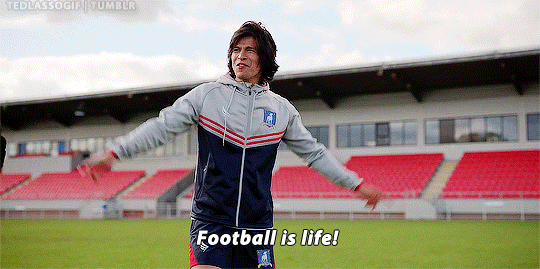
Fast forward some 400 years to Dani Rojas, the finest fictional product of Tigres UANL youth academy. According to Dani, football is life. And if football is indeed, life, then players’ roles are everything. Since their introduction in FM14, I cannot stress the importance of roles and role partnerships. Over the years we got so many roles added to the game that it often is an exercise in frustration just figuring out which roles will suit your players best. The puzzle does not stop there, because you are also trying to figure out which roles will fit into your tactic and compliment each other in positive ways. And this is all before we even consider all the more exotic roles, like your trequartistas and mezzalas.

Let’s take a collective deep breath.
Football Manager should not be complicated. Or at least not more than the real sport is. If anything we don’t need to worry about the nitty gritty rules of the game, like you would if you were playing in reality. Thankfully FM’s game engine calculates all of that for you in the background. The main thing that you, as the virtual manager, need to worry about is making sure that each player on your team is suitable to the task that you have in mind for him. A bit like in the army, the officer won’t assign someone who cannot hit a beer can at 10 meters, the role of the platoon sniper. Or ask the bloke scared of explosions to be the squad’s grenadier.
Likewise, football is a team sport meaning that the players should work well together and compliment each other’s strengths and skills. Individually, your players’ skills and attributes will determine their roles. You do not need every player to do everything. To make it simpler, you just need to look at the player’s attribute profile in order to group them into one of the broad categories: defence, midfield or attack. But before you can start studying the attributes and categorizing players, you’ll need to decide on your overall tactical plan.
Tactical Planning – Get That Graphing Paper Out!
In every single FM I played over the last decade, I could not avoid one important step. I’m talking about drawing out my tactical ideas. Not just in my head, but on actual paper. Whether it comes to figuring out the formation or the role distribution, I enjoy starting here. The paper is perfect medium for visualizing your ideas and transferring them into the video game. There is something comforting in the process. Think of it as a sort of shopping list for your future Football Manager tactic. First comes the idea, then the graphing paper comes out! But already on paper you can start dreaming of the success and glory that the tactic could bring.
Speaking of tactical theorizing and ideal tactics, I always wanted to implement some of the formations from the early history of the beautiful game. To show that these blasts from the past can still be quite effective in the modern game. One such formation is Herbert Chapman’s WM. It defined English football even before 4-4-2 took over that particular honour. WM was also the formation that made Arsenal into a truly BIG club. While using it, Chapman was able to win one FA Cup and two First Division titles. The first proper trophies won by the club. The WM formation also has the honour of being among the first proper football tactics.
Prior to 1925 and Herber Chapman’s introduction of WM, football was not a game of elaborate tactics. Defending was looked down upon and English teams were slow in changing this habit well into late 1800s. Passing the ball was also not encouraged. That is until “pass-first” Scotland showed us a better way in its famous match against England. So before there were such things as football tactics, it was an attacking and dribbling sport. Not a “passing game”. One where as many as seven players would act as forwards at the same time with only one designated defender.
Then in 1925 the world’s first properly elaborated tactic was introduced: The W-M Formation. It was introduced by Arsenal’s coach at the time: Herbert Chapman and it was quite revolutionary. And it worked especially well because it drew a clear distinction between attacking, defending and supporting player roles.
Recreating Simple Football
It was as simple as a tactic could get. Essentially you had a very symmetrical shape with 3 designated defenders, 3 attackers (two inside forwards and one central striker). And four “transition” players that rotated between attack and defence, depending on the phase of play.
Following its unprecedented success Chapman’s WM was copied by several English sides at the time. But none could emulate its strengths in the same way. This was due to another big revolutionary change that Chapman foresaw in the football and tried to implement into his tactics. Just as the game was becoming more about tactics and designated roles, it was becoming less about all-out attack and more about passing the ball. A new player role, that of the team playmaker, was emerging and taking center stage. The reason why Chapman’s innovative formation worked so well was especially due to how it revolved around its creative hub, Alex James. The Playmaker.

The Scottsman had the skills of a modern deep-lying creative midfielder but played in an advanced inside forward position (which at the time wasn’t located on the wing but in the advanced midfield position behind the striker). From there he could provided an important link between defence and attack. Much like Dennis Bergkamp of his era. James was known for his elite footballing intelligence, ball control and passing. He also had a keen eye for goal, scoring 106 of them during his time with The Gunners. A unique skill combination that was very rare in footballers of the time. He was one of the earliest attacking midfield playmakers in the history of the game, and the hub around which Chapman’s Arsenal revolved.
Another reason why the success of WM was relatively short-lived (ending with the fiasco that was 1953 Hungary-England match), was because it was a very demanding tactic that required players with high levels of fitness. This is was especially true of the four “transition” roles of the two half-backs/defensive midfielders and the two wingers/wingbacks. Chapman’s formation demanded that these players track back quickly and often, as soon as the team lost the ball. At the time when most footballers were still semi-professional by modern standards, it was much harder to create a team of athletes capable of such performance. But not so much in modern football.
Which is why I think that Chapman’s WM is easier than ever to implement in the modern FM game. And especially in the world of modern football, built upon the legacy of Total Football and Geggenpressing.
But of course, this makes it even more important that your two deeper midfielders and wingbacks count among your best players. If you want to implement this tactic correctly.
It’s An Attribute Game
So while the concept behind the basic WM is rather simple on paper, the challenge comes in recruiting the right kind of players to fill the roles. And this brings us back to attributes and roles. Incidentally this, along with developing youth, has always been my favourite parts of any Football Manager game.
The concept of attributes is fundamental to any FM game, going way back to the early Champ Manager days.
Inherently, I always develop my tactics with player attributes in mind. Meaning that I try to keep in mind the key attributes needed to execute the tactic in the game. Again this process starts on paper when I first outline the formation.
Here, before setting-up player roles, I visualize what kind of players will be needed to make the whole tactic work. Hence my little notes on the attributes under each position.
Essentially it is a matter of getting the right players into correct positions and letting them do what they do best. So in the end even if you stick with very generic roles, the tactic should work well. As long as you clearly understand what each role is supposed to do. Actually using generic roles (basically any role name that doesn’t sound Italian or Spanish) is usually the way to go. At least in the beginning when you are still developing your tactic. Keeping it simple, should be your motto whether you are playing FM22 or FM14.
KISS – Keep it Simple, Stupid
So using the concept outlined above, this is how it might look in the game. Note how I only used the most generic roles, roles that have been present in the game since FM14. The kind of behaviour that I require from my players in WM should be achievable with those roles. And without the need to even use any individual instructions. Not to say that exotic, advanced roles like Trequartista would not fit into the tactic. But such a role would require a very special kind of player. Which often complicates things. Such as when you need to make a substitution or no longer have him available due to injury or transfer. So I prefer to keep things simple and make a tactic that can accommodate a wide variety of players. And fit players who can perform a very specific function due to their unique attribute combination.
Simply put, my take on WM is rather simple. My main challenge is to make sure that like pieces in a jigsaw puzzle, all the tactical parts (aka roles) fit together and create good synergy. Which is why I like to have tall and strong Targetman-type striker spearheading our attack. But not your typical tall guy to wait for the hoofed balls. He needs to possess fineness and technique to be able to control the ball quickly when under pressure from opposing defenders. And then find good passing lanes to the two attacking midfielders and wingers.
The attacking midfielders will need to be great passers. And wingers (or wingbacks if you will) are responsible to two phases of play, attack and defence. As such a good winger need to be very fit in order to be able to cover the entire sideline. Also their crossing ability, defensive positioning and work rate are favoured above all else.

Finally, you will need your fastest players here so nothing lower than 15 for both acceleration and pace will suffice. Essentially, the wingers’ job is to stay wide and send crosses into the box where the central striker can control the ball and then attempt a shot on goal if available or if not, pass it to the two AMCs running late into space. These two attacking midfielders, your typical shadow striker and a playmaker, complete the attacking portion of the formation.
The two deep midfielders need to be the heart and the lungs of the whole formation by tracking back and forward in order to control the center of the field. These two “box-to-box” midfielders are key to the tactic’s transition phase and general flow of the formation. They will also need to excel in their passing game, especially during transition phase. And like the two winger/wingback hybrids they will need to be very fit. When defending, the two central midfielders and wingers need to track back and form a seven-men defensive backbone.
In attack, the two central midfielders move forward as a unit to support the wingers and the three attackers. This leaves the three defenders in the back as the only players focused on defending. In turn the formation turns into a sort of staggered 3-2-5 shape.
The way I easily categorize my roles (and thus the players that I’ll need to fill my formation) is by assigning a Primary (major) and Secondary (minor) task to each player. They can be either Attack, Support or Defence. But each player always has two tasks (Major and minor), irrespective of the individual mentality assigned to them. For example my winger’s tasks are primarily – Support (delivering crosses), and secondarily – defence (marking and tackling the opposition wingback). While the Central Striker is tasked with Attack first, and secondly support. Then the two deep “box-to-box” midfielders are primarily Support roles with minor/secondary roles in defence.
Chapman’s Legacy
Although historically the WM was eclipsed by the Magic Magyars’ high-flying WW, and may not have had same influence on world football as the Dutch 4-3-3 or Pep’s Juego de Posicion, it nevertheless is not forgotten. As recently as 2016, Patrick Viera, a former Arsenal legend, brought the WM formation to New York City FC during his brief stint as manager there.
While in Italy, Chapman’s WM led to the development of sistema formation variant. The sistema eventually evolved into the uniquely Italian catenaccio system which still influences Italian football to this day. Thus the legacy of Herbert Chapman’s WM continues with clear traces of it in modern football. And not only in how it made Arsenal into a prestigious club that we all know today. But in its mark on football leagues as wide-ranging as MLS and Italy’s Serie A. Thank you Mr.Chapman!
To Be Continued!
In the next installment (probably not coming at least until FM22 Beta drops) I will be looking at how to integrate Chapman’s WM into the game. The special focus will be on the Three-Men defensive unit. My take on it might be a little too “edgy” for some FM managers but after extensive testing in FM21 I think it should work just well in the new version. I am not going to tell you exactly what it is but from my previous writing and obsession with Cruyff’s Total Football, you can probably guess what it might look like.
As a hint, lets just say I’m very excited by one particular, new role revealed in today’s “First Look” video from SI. You will have to watch the video carefully to know what it is.
All I am going to say is that it’s not your typical three in the back,, that you might expect. Also the role of the playmaker will get more attention because it glues the whole formation together.
And if you enjoyed this article, then please follow us @ Dictate The Game’s Facebook and Dictate The Game’s Twitter.
Other Articles You Might Like:
amp

